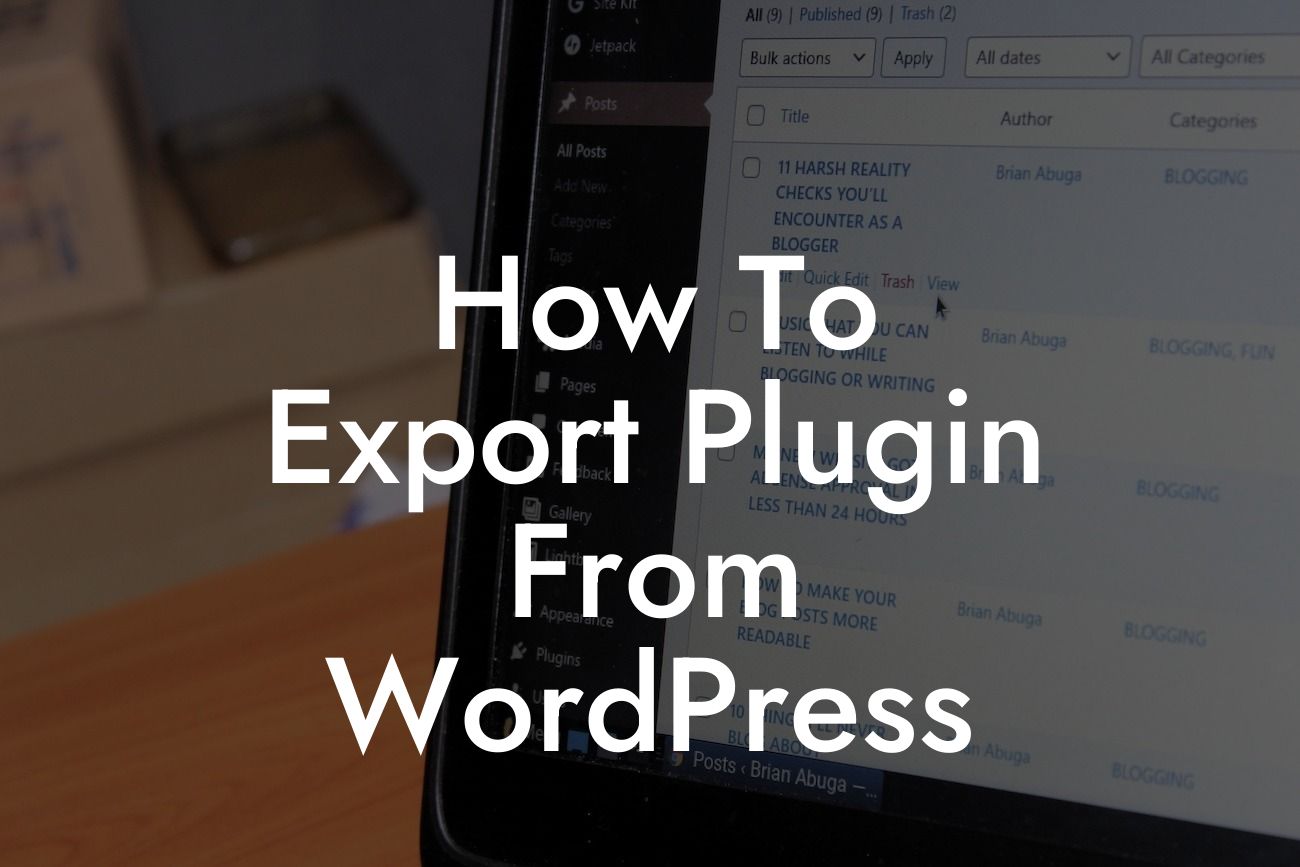Exporting a WordPress plugin can be a game-changer for your online presence. Whether you're a small business owner or an entrepreneur, having the ability to export a plugin can give you more control over your website's functionality and customization. In this guide, we will walk you through the step-by-step process of exporting a WordPress plugin, empowering you to take your online presence to the next level.
Exporting your WordPress plugin is a straightforward process that requires following a few essential steps. Let's dive into each of these steps one by one, ensuring you have a clear understanding of how to export a plugin effectively.
Step 1: Accessing the Plugin Editor
To export a plugin, you first need to access the Plugin Editor in your WordPress dashboard. Head over to the "Plugins" section and click on "Editor." This will bring you to the Plugin Editor page, where you can make changes to your installed plugins.
Step 2: Selecting the Plugin to Export
Looking For a Custom QuickBook Integration?
In the Plugin Editor, you will see a drop-down menu labeled "Select plugin to edit." Choose the plugin you want to export from the list. Make sure you select the correct plugin as exporting the wrong one could cause issues with your website's functionality.
Step 3: Exporting the Plugin's Files
Once you have selected the plugin you want to export, locate the main plugin file on the right-hand side. Typically, this file will be named after the plugin and have a ".php" extension. Click on this file to open it in the Plugin Editor.
Now, copy the entire code of the plugin file by selecting it and pressing "Ctrl + C" on Windows or "Cmd + C" on Mac. Paste this code into a new file in a code editor or text editor of your choice, and save it with an appropriate filename and ".php" extension. Congratulations, you have successfully exported the plugin!
How To Export Plugin From Wordpress Example:
Let's say you have been using a popular contact form plugin on your WordPress website, but you would like to make some customizations to fit your brand's aesthetic better. By exporting the plugin, you can modify the code to match your desired look and functionality. This flexibility allows you to create a unique user experience that aligns with your brand identity.
Exporting a WordPress plugin provides you with the freedom to customize, enhance, and optimize your website's functionality. Take advantage of this guide to export plugins effortlessly and unlock the potential to elevate your online presence. At DamnWoo, we believe in empowering small businesses and entrepreneurs like you with exceptional WordPress plugins. Explore our range of awesome plugins and experience the extraordinary difference they can make. Don't forget to share this guide with others who might find it helpful on their WordPress journey. Together, let's thrive in the digital world!













